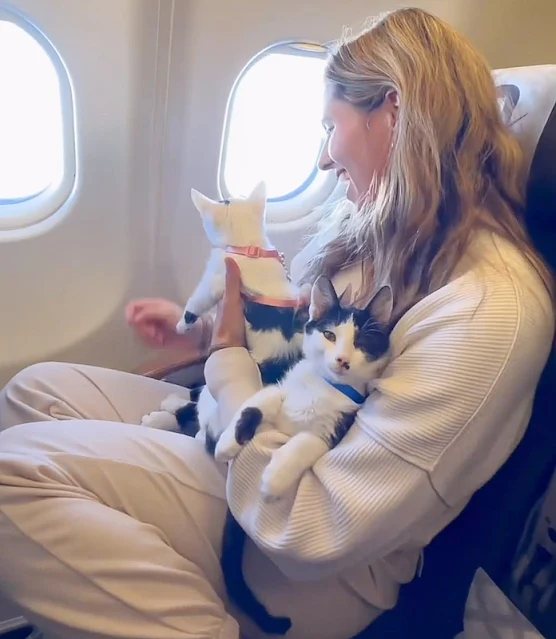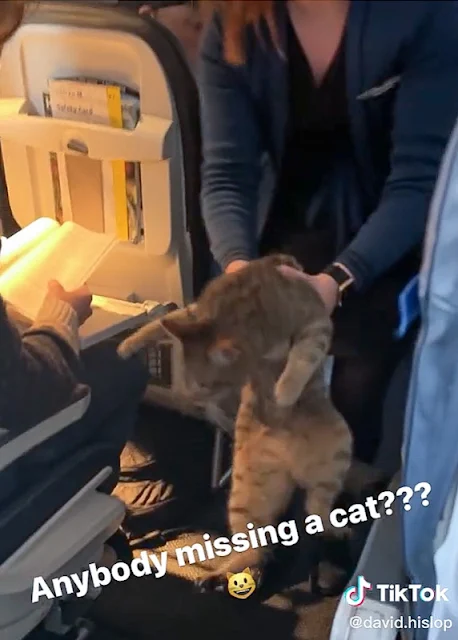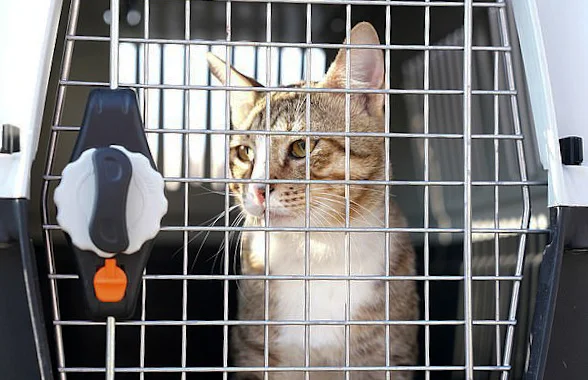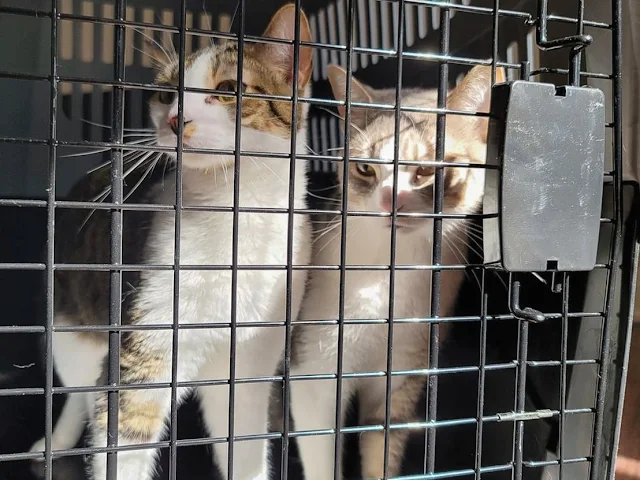The news today about which I'm very pleased and impressed is that 28 cats which were displaced by Hurricane Helene have arrived at a Cape Cod shelter. And also, simultaneously, it's reported that cats rescued from the same hurricane have arrived in Cincinnati. Dozens of feline friends from Tift County Georgia are now at Cincinnati Animal Care.
And regarding the 28 cats displaced, referred to above, the Massachusetts Society for the Prevention of Cruelty to Animals animal shelter on Route 28 received the animals on Tuesday, October 8 and they could be ready for adoption by the end of the week.
Cats are very resilient under these circumstances. But also, humans are very resilient and I'm referring here to Americans who do such a wonderful job of finding homes for cats displaced during natural disasters such as the one mentioned.
They do this over and over again and take in displaced and homeless cats out of one state and air freight them across the country to other states and other animal shelters where they can be rehomed. It's complex and it requires a lot of commitment, effort and time and money. And yet they do it obviously supported by many volunteers. These volunteers have hearts of gold as far as I'm concerned.
You don't see this kind of thing in Europe and in the UK where I live. It's is, it seems to me, specific to America where they have this well oiled machine which kicks into action. Perhaps it's partly due to the fact that they have lots of hurricanes it seems to me in America along a specific corridor.
Hurricane Helene was a devastating tropical cyclone that caused widespread destruction fatalities across the South-Eastern United States in late September 2024. It was the strongest hurricane on record to strike the Big Band region of Florida, and the deadliest advantage hurricane since Maria in 2017.
America's great rehoming process
In the United States, when natural disasters like hurricanes displace companion animals, animal rescuers, shelters, and organizations come together to relocate and rescue these animals. The goal is to ensure that pets left behind or made homeless after a disaster are brought to safety, cared for, and, ideally, rehomed. This type of large-scale animal transport is complex and coordinated, involving many steps and stakeholders.
Process of Companion Animal Transport After Disasters
- Initial Rescue Efforts:
After a natural disaster like a hurricane, local authorities, animal control, and rescue organizations begin by identifying and rescuing animals. This could include dogs, cats, and sometimes other companion animals like rabbits or birds. Many of these animals are either found wandering, trapped in homes, or surrendered by families who can no longer care for them due to the crisis. - Temporary Shelters:
These rescued animals are typically brought to temporary shelters or staging areas. Here, they receive medical care, food, and water. Many times, these shelters are set up by national animal welfare organizations like the ASPCA, Humane Society of the United States (HSUS), and Best Friends Animal Society, along with local shelters. These temporary shelters often quickly reach capacity, especially in heavily impacted areas, and that’s where the need for transportation arises. - Assessment and Coordination:
Rescuers assess the health and temperament of the animals to determine if they are fit for transport. Volunteers and coordinators from national organizations, local shelters, and transport groups create a plan for relocating the animals. The plan involves moving animals from the affected region to shelters in other parts of the country that have the space and resources to take them in. In many cases, a distinction is made between pets who were owned and need to be reunited with their families, and those who were strays or surrendered prior to or during the disaster. The former are often held locally for a period to allow families to reclaim them, while the latter may be transported sooner. - Air and Ground Transport:
There are two main modes of transporting companion animals across the country:
- Ground Transport: Ground transport is typically coordinated using a network of volunteers or professional pet transport companies. They use specially equipped vehicles that can accommodate multiple animals in a safe and controlled environment. The trips are often long-distance and require careful planning to ensure the animals are kept calm, safe, and healthy during the journey.
- Air Transport: In more severe disaster situations, or when time is of the essence, air transport may be used. National organizations partner with airlines, pilots, or charter services to fly animals out of disaster zones to safer areas. Organizations such as Wings of Rescue, GreaterGood.org, and Pilots N Paws are frequently involved in this effort. After Hurricane Helene and other hurricanes, private aircraft, cargo planes, and even military planes have been used to evacuate animals.
- Receiving Shelters and Rehoming:
The animals are sent to shelters across the country that have capacity and resources to care for them. These receiving shelters might be in areas unaffected by the disaster, where adoption rates are higher or where the animals will have a better chance of being rehomed. For example, dogs from a hurricane-hit area in Texas may be sent to states in the Northeast, where there is a demand for adoptable pets. Once the animals arrive at their destination, they are often placed in foster care or in shelter adoption programs. The animals receive additional veterinary care and may be microchipped or spayed/neutered if necessary. - Public Awareness and Adoption Drives:
Following the relocation of these animals, shelters and rescue organizations often launch public awareness campaigns and adoption drives. Highlighting that these animals are survivors of a natural disaster can attract attention and motivate people to adopt. These campaigns often have strong media coverage, drawing attention to the urgent need for homes for these pets.
Example: Hurricane Helene (or Similar Hurricanes)
Hurricane Helene, although not as notorious for animal displacement as other hurricanes (like Hurricane Katrina or Harvey), serves as a case study of how animals are moved in response to such disasters. After hurricanes, it is common for animal shelters in the affected region to be overwhelmed with stray or surrendered pets. Local authorities, overwhelmed by the number of displaced animals, seek help from national organizations.
For example, in hurricanes like Helene:
- Wings of Rescue or Pilots N Paws might arrange flights to transport animals out of affected areas.
- Shelters in unaffected states, like those in the Midwest or Northeast, would receive the animals. These shelters would prepare for an influx by recruiting extra volunteers, organizing adoption events, and reaching out to the public.
Key Organizations Involved in Disaster Animal Rescue
- ASPCA: The American Society for the Prevention of Cruelty to Animals is often one of the first organizations on the ground to help coordinate animal rescues.
- Humane Society of the United States (HSUS): They provide direct response teams and coordinate the evacuation and relocation of animals.
- Wings of Rescue: A nonprofit organization that uses air transport to relocate animals from disaster zones.
- Best Friends Animal Society: They often play a leading role in disaster animal rescue and relocation efforts.
- Pilots N Paws: A volunteer organization that uses private pilots to transport animals.
Challenges in Transporting Animals
- Capacity: Shelters in disaster zones are often quickly overwhelmed, and coordinating the transfer of hundreds of animals is a logistical challenge.
- Health Risks: The stress of transport and the animals’ exposure to trauma can make them vulnerable to illness or behavioral issues.
- Resource Constraints: Coordinating large-scale evacuations requires funding, volunteers, vehicles, and space in shelters across the country, which can be difficult to secure quickly.
- Reuniting Pets with Owners: While some animals are transported for adoption, others may need to stay in the area to be reunited with their original families. Tracking and identifying pets during a chaotic event like a hurricane can be difficult.
Through this process, companion animals are given a second chance at life, and many are adopted into loving homes across the country, far from the disaster that originally displaced them.




















